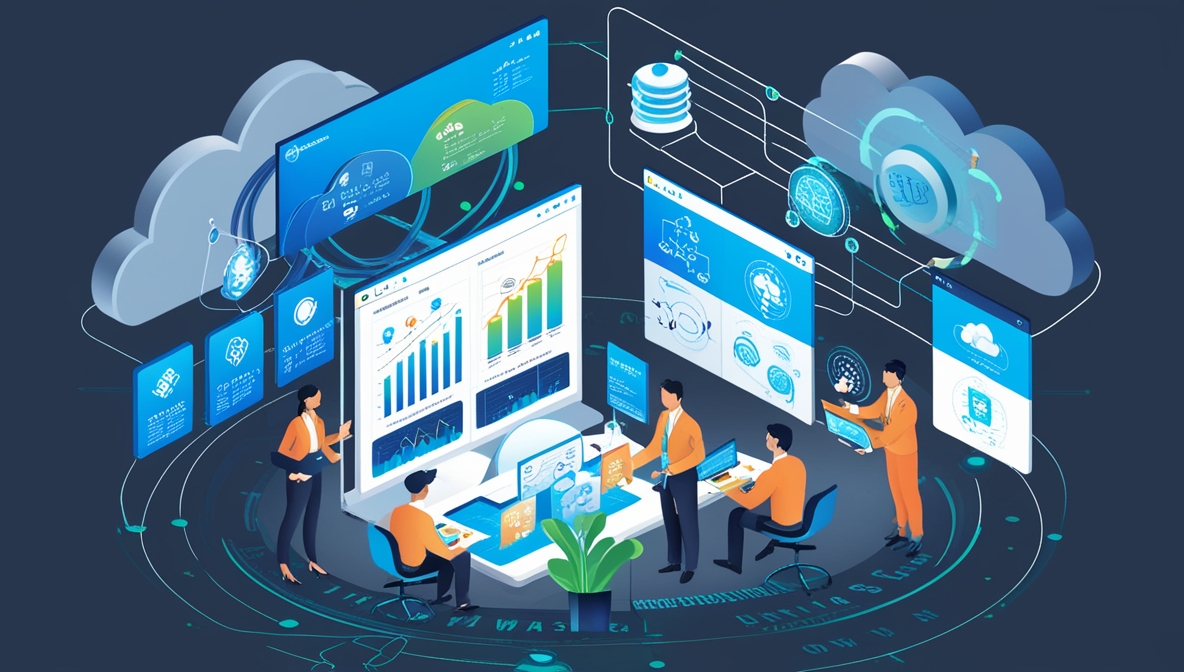This comprehensive information technology (IT) plan exemplifies how leveraging data-driven solutions can drive digital transformation and operational efficiency. It highlights strategic initiatives, key achievements, and future goals, providing valuable insights for organizations seeking to optimize their IT services. This example of a data-driven IT Plan underscores the importance of data analytics, performance accountability, and strategic partnerships in achieving a successful digital transformation.
Organizations must continuously evolve to stay competitive in today's fast-paced digital landscape. A well-structured IT plan is crucial for aligning technology with business goals, enhancing service delivery, and driving innovation. This document illustrates how data-driven strategies can transform IT services, improve operational efficiency, and create a culture of accountability and continuous improvement.
Many organizations struggle with fragmented IT systems, inefficient processes, and a lack of clear strategy. These challenges can lead to increased costs, reduced productivity, and an inability to respond quickly to changing business needs. IT departments may find delivering value and supporting organizational objectives difficult without a cohesive plan.
These issues can significantly impact an organization's performance and growth. Inefficiencies in IT service management, data silos, and fragmented processes can hinder decision-making and operational effectiveness. The lack of integration and coordination among IT units often leads to duplicated efforts, wasted resources, and suboptimal outcomes. Furthermore, the absence of a strategic approach to IT investments can result in missed opportunities for innovation and cost savings.
This example of a data-driven IT Plan for digital transformation outlines a series of strategic initiatives to address these challenges. Organizations can streamline their operations and enhance service delivery by implementing a unified IT service management system, consolidating resources, and fostering a culture of performance and accountability. The plan emphasizes using data and analytics to drive decision-making and improve transparency. For example, deploying Microsoft Power BI enabled the creation of actionable insights, leading to more efficient operations and better resource allocation. Consolidating disparate IT systems also resulted in significant cost savings, including $125,000 annually from upgrading the IBM mainframe and $13,000 annually from decommissioning individual internet circuits.
In conclusion, this IT plan example demonstrates how data-driven solutions can be leveraged to drive digital transformation and operational efficiency. Organizations can optimize their IT services, reduce costs, and improve overall performance by addressing key challenges and implementing strategic initiatives. This document serves as a valuable guide for CIOs and IT leaders seeking to navigate the complexities of digital transformation and achieve sustainable success in their IT operations.
Main Contents
- Strategic Initiatives: Detailed outline of key initiatives to enhance IT service delivery, including deploying a unified IT service management system and consolidating IT resources.
- Achievements and Metrics: Highlighted accomplishments such as cost savings from infrastructure upgrades and the impact of data analytics on operational efficiency.
- Future Goals: Planned projects and strategic directions for the upcoming year, focusing on digital transformation and continuous improvement.
- Data-Driven Solutions: Examples of how data and analytics have been used to drive decision-making, improve transparency, and optimize resource allocation.
- Performance and Accountability: Description of the efforts to build a culture of accountability and performance, including implementing metrics and reporting systems.
Key Takeaways
- Unified IT Service Management: Implementing a centralized system can streamline operations, reduce costs, and enhance service delivery.
- Cost Savings through Consolidation: Consolidating IT resources and upgrading infrastructure can lead to significant cost savings and improved efficiency.
- Importance of Data and Analytics: Leveraging data and analytics is crucial for driving decision-making, increasing transparency, and optimizing resource use.
- Building a Culture of Accountability: Establishing a culture of performance and accountability through clear metrics and reporting systems is essential for continuous improvement.
- Strategic Planning for Digital Transformation: A well-structured IT plan that aligns with business goals is vital for successfully navigating digital transformation and achieving long-term success.
CIOs and IT leaders can utilize this example of an IT Plan for digital transformation using Data-Driven Solutions to address and solve various real-world challenges in their organizations. By understanding and implementing the strategies outlined in the plan, they can optimize their IT services, enhance operational efficiency, and drive digital transformation through data-driven solutions.
- Streamline IT Service Management: As the plan demonstrates, CIOs can consolidate disparate IT processes and systems by adopting a unified IT service management system, leading to more efficient operations and reduced costs.
- Achieve Cost Savings: The example shows how consolidating IT resources and upgrading infrastructure can result in significant cost savings. IT leaders can replicate these strategies to identify and eliminate redundant expenditures in their organizations.
- Leverage Data Analytics: The plan emphasizes the importance of data and analytics in decision-making. CIOs can implement similar data-driven approaches to gain insights into their operations, improve transparency, and make informed decisions that drive performance.
- Foster a Culture of Accountability: As the plan outlines, establishing clear metrics and reporting systems helps build a culture of accountability. IT leaders can use these strategies to track performance, set expectations, and ensure continuous team improvement.
- Align IT with Business Goals: The plan provides a roadmap for aligning IT initiatives with broader business objectives. CIOs can use this framework to ensure their IT strategies support and drive their organizations' overall goals.
By leveraging the strategies and solutions outlined in this example of an IT Plan for Digital Transformation using Data-Driven Solutions, CIOs and IT leaders can address common challenges such as inefficiencies, high costs, and lack of strategic direction. This comprehensive approach enhances IT service delivery and aligns technology initiatives with business goals, driving overall organizational success.

